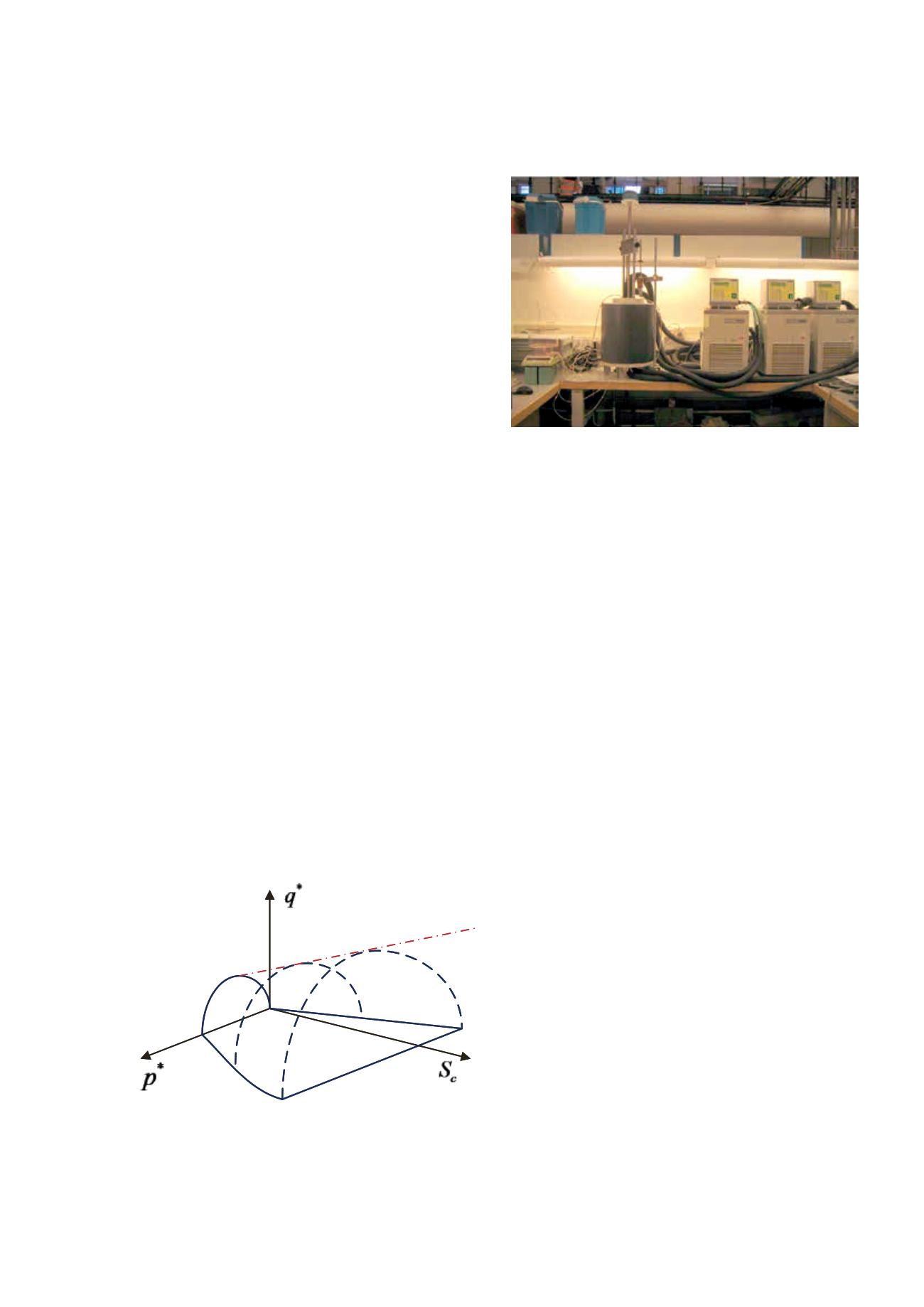

58
SAMC
o
T
• ANNUAL REPORT 2015
in this direction and reasonable results are already being
achieved.
Since August 2015, Kadivar has been a visiting researcher
at the laboratories of the NGI working with NGI’s frost
heave cell device to understand the behaviour of soil during
freezing and to measure the amount of frost heave. By
using NGI’s device, it is possible to monitor the temporal
freezing behaviour of soil at different temperatures. The
soil sample, either intact or reconstructed, is placed into
the cell and adjustable temperature is applied from the top,
bottom and side of the sample. The freezing characteristics
of soil that can be studied by this device are the location
of freezing front, expansion of soil sample and amount of
water intake from an external source during the test. The
location of the freezing front is obtained by checking the
temperature at the sides of the sample in different time
steps. The main purpose of Kadivar’s work at NGI is to
study the frost susceptibility of normally-consolidated clay
at different temperatures. Mehdi will sum up his work at
NGI and come back to NTNU by the end of January 2016.
CFD model REEF3D
PhD candidate Nadeem Ahmad is working on the three-
dimensional numerical modeling of local scour in cold
climates. Ahmad
‘
s position, although strongly linked to
SAMCoT is funded through the affi liated Norwegian-
Polish research project “Vulnerability of the Arctic coasts
to climate changes” (ARCOAST). He uses the open-source
computational fluid dynamics (CFD) model REEF3D, devel-
oped by the CFD group at the Department of Civil and
Transport Engineering at NTNU, Trondheim. REEF3D has
a wide range of applicability within the fi eld of coastal
and ocean engineering, simulating wave hydrodynamics,
Coastal zone development in the Arctic is quite demand-
ing. The construction of roads, harbours and other facili-
ties in the Arctic faces several challenges, e.g. exposure
to combined actions from waves, currents and ice, high
coastal erosion rates, building on permafrost soils and
the remoteness and lack of local material suitable for
construction purposes. Moreover, climate change may
result in a warmer Arctic with less sea-ice cover leading to
higher wave forces on structures, more unstable perma-
frost soils and increasing rates of coastal erosion during
the service lifetime of structures.
In order to address these general challenges according
to the industry partners’ needs for innovation, several
research projects have been carried out.
Simulating the behaviour of frozen soils
Postdoc Seyed Ali G. Amiri and PhD student Mehdi Kadivar
areworking to developTHMconstitutivemodels for simulat-
ing the behaviour of frozen soils. Amiri has developed an
elastoplastic model to describe the mechanical behav-
iour as well as the behaviour due to variation of tempera-
ture. The proposed model is able to represent many of the
fundamental features of the behaviour of frozen soils such
as ice segregation phenomena and strength-weakening
due to pressure melting. Currently, this model is being
implemented in the commercial software package PLAXIS
and will soon be ready to use in geotechnical engineering
practice.
Amiri submitted a paper describing his model to the
Canadian Geotechnical Journal. The reviewers suggested
minor revisions and we expect this paper to be published
quite soon in 2016. Amiri’s second step is to extend his
model to consider the effect of strain rate on the stress-
strain behaviour of the soil. Good progress has been made
*
p
*
q
c
S
Figure WP6_2 Norwegian Geotechnical Institute`s (NGI) frost
heave cell device.
Figure WP6_1 Three-dimensional view of the yield surfaces in
p*- q*- S space
















